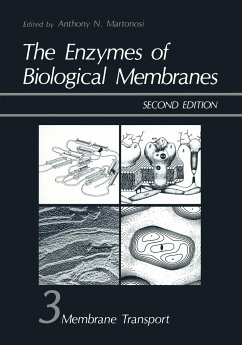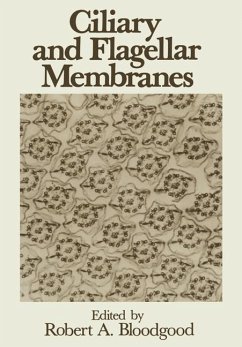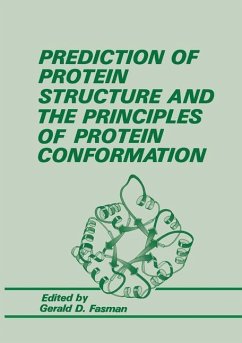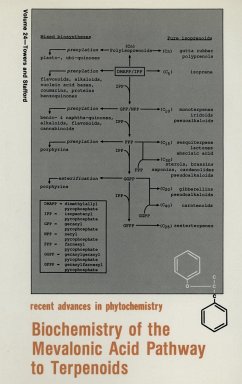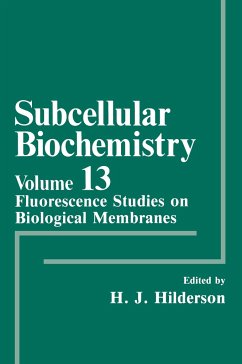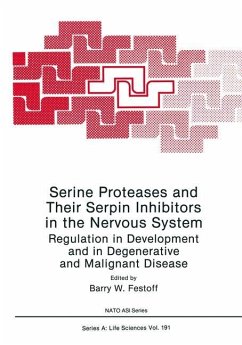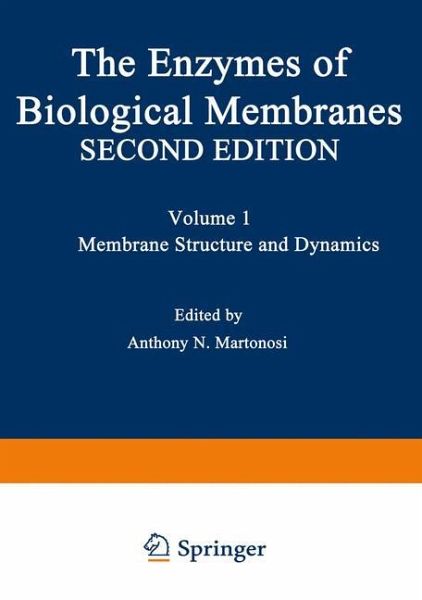
The Enzymes of Biological Membranes
Volume 1 Membrane Structure and Dynamics
Herausgegeben: Martonosi, Anthony N.

PAYBACK Punkte
39 °P sammeln!
In the first edition of The Enzymes of Biological Membranes, published in four volumes in 1976, we collected the mass of widely scattered information on membrane-linked enzymes and metabolic processes up to about 1975. This was a period of transition from the romantic phase of membrane biochemistry, preoccupied with conceptual developments and the general properties of membranes, to an era of mounting interest in the specific properties of membrane-linked enzymes analyzed from the viewpoints of modem enzymology. The level of sophistication in various areas of membrane research varied widely; t...
In the first edition of The Enzymes of Biological Membranes, published in four volumes in 1976, we collected the mass of widely scattered information on membrane-linked enzymes and metabolic processes up to about 1975. This was a period of transition from the romantic phase of membrane biochemistry, preoccupied with conceptual developments and the general properties of membranes, to an era of mounting interest in the specific properties of membrane-linked enzymes analyzed from the viewpoints of modem enzymology. The level of sophistication in various areas of membrane research varied widely; the structures of cytochrome c and cytochrome b5 were known to atomic detail, while the majority of membrane-linked enzymes had not even been isolated. In the intervening eight years our knowledge of membrane-linked enzymes ex panded beyond the wildest expectations. The purpose of the second edition of The Enzymes of Biological Membranes is to record these developments. The first volume describes the physical and chemical techniques used in the analysis of the structure and dynamics of biological membranes. In the second volume the enzymes and met abolic systems that participate in the biosynthesis of cell and membrane components are discussed. The third and fourth volumes review recent developments in active transport, oxidative phosphorylation and photosynthesis.



